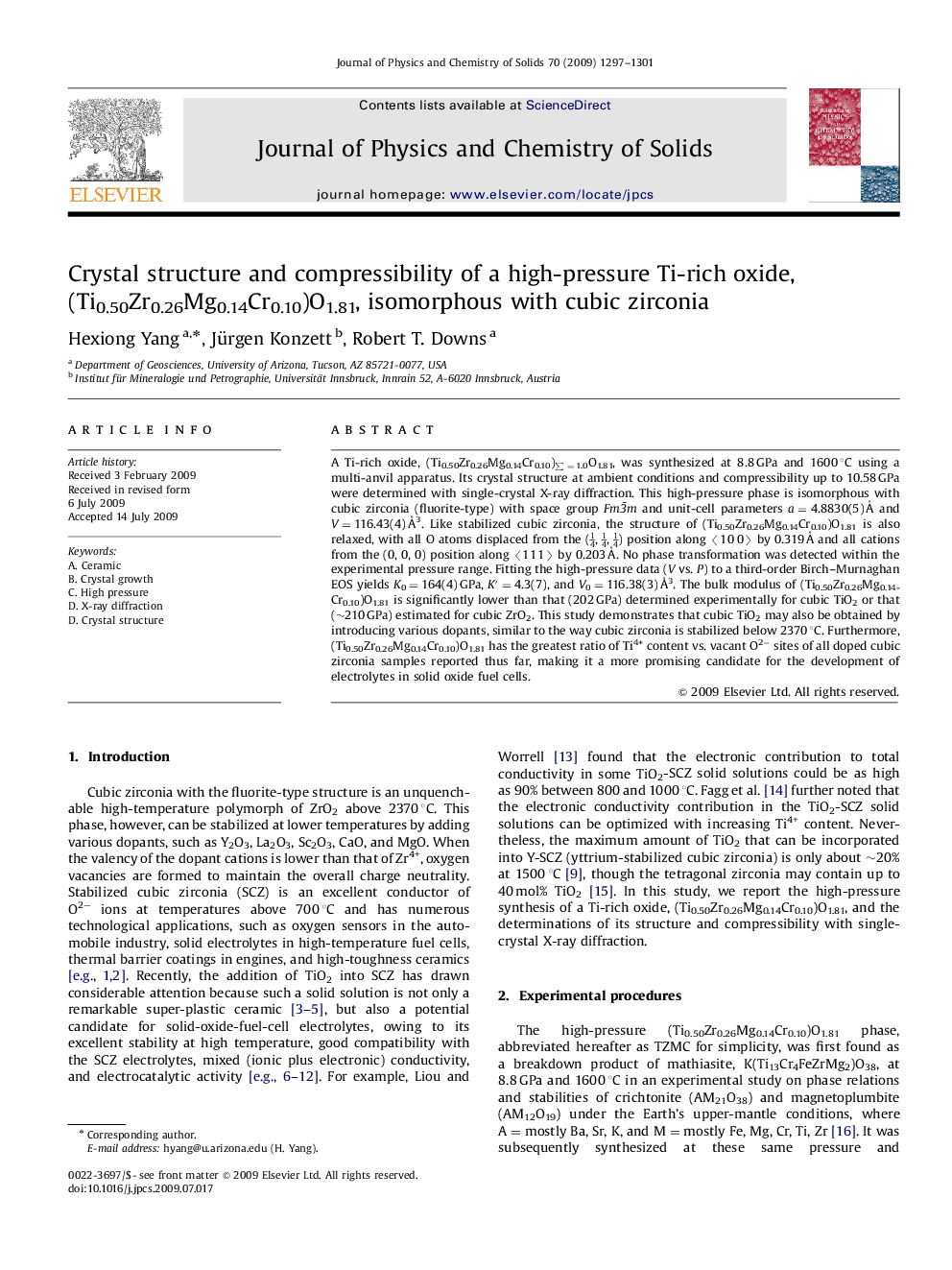| Article ID | Journal | Published Year | Pages | File Type |
|---|---|---|---|---|
| 1517387 | Journal of Physics and Chemistry of Solids | 2009 | 5 Pages |
Abstract
A Ti-rich oxide, (Ti0.50Zr0.26Mg0.14Cr0.10)â=1.0O1.81, was synthesized at 8.8 GPa and 1600 °C using a multi-anvil apparatus. Its crystal structure at ambient conditions and compressibility up to 10.58 GPa were determined with single-crystal X-ray diffraction. This high-pressure phase is isomorphous with cubic zirconia (fluorite-type) with space group Fm3¯m and unit-cell parameters a=4.8830(5) Ã
and V=116.43(4)Â Ã
3. Like stabilized cubic zirconia, the structure of (Ti0.50Zr0.26Mg0.14Cr0.10)O1.81 is also relaxed, with all O atoms displaced from the (14, 14, 14) position along ã1Â 0Â 0ã by 0.319Â Ã
and all cations from the (0, 0, 0) position along ã1Â 1Â 1ã by 0.203Â Ã
. No phase transformation was detected within the experimental pressure range. Fitting the high-pressure data (V vs. P) to a third-order Birch-Murnaghan EOS yields K0=164(4)Â GPa, Kâ²=4.3(7), and V0=116.38(3)Â Ã
3. The bulk modulus of (Ti0.50Zr0.26Mg0.14Cr0.10)O1.81 is significantly lower than that (202 GPa) determined experimentally for cubic TiO2 or that (~210 GPa) estimated for cubic ZrO2. This study demonstrates that cubic TiO2 may also be obtained by introducing various dopants, similar to the way cubic zirconia is stabilized below 2370 °C. Furthermore, (Ti0.50Zr0.26Mg0.14Cr0.10)O1.81 has the greatest ratio of Ti4+ content vs. vacant O2â sites of all doped cubic zirconia samples reported thus far, making it a more promising candidate for the development of electrolytes in solid oxide fuel cells.
Related Topics
Physical Sciences and Engineering
Materials Science
Electronic, Optical and Magnetic Materials
Authors
Hexiong Yang, Jürgen Konzett, Robert T. Downs,
